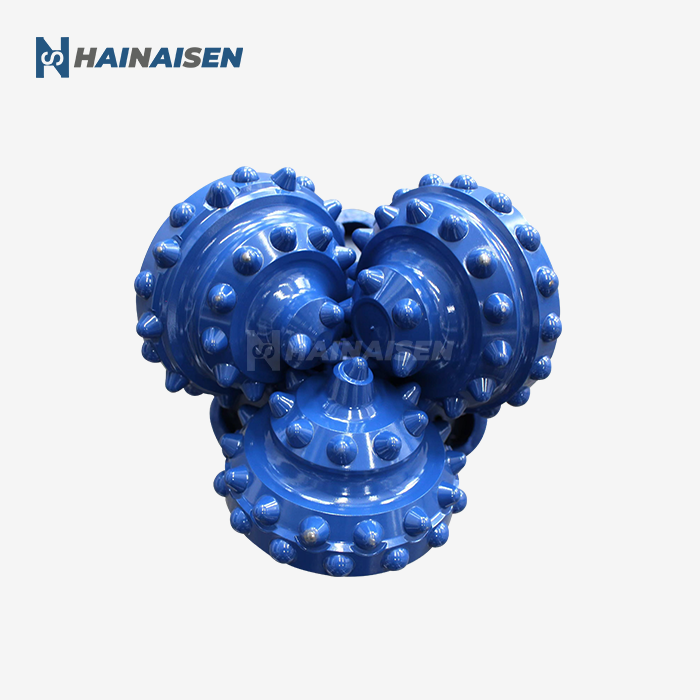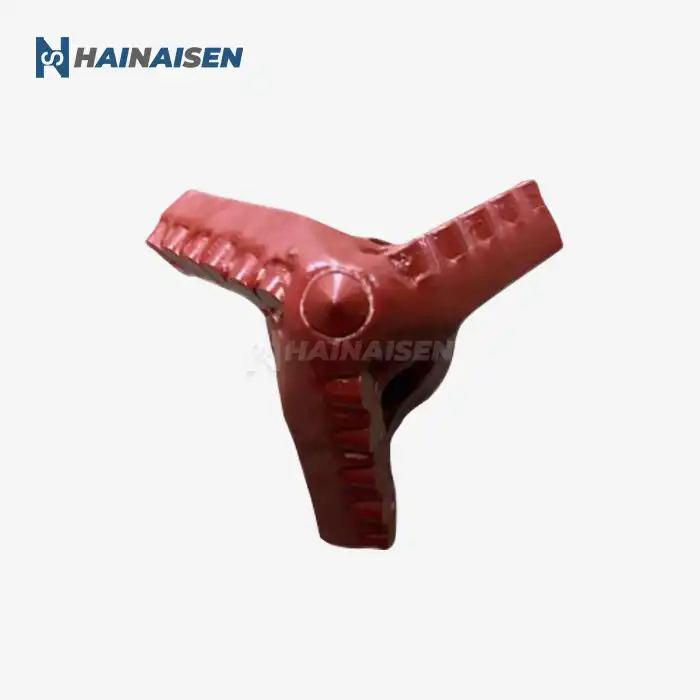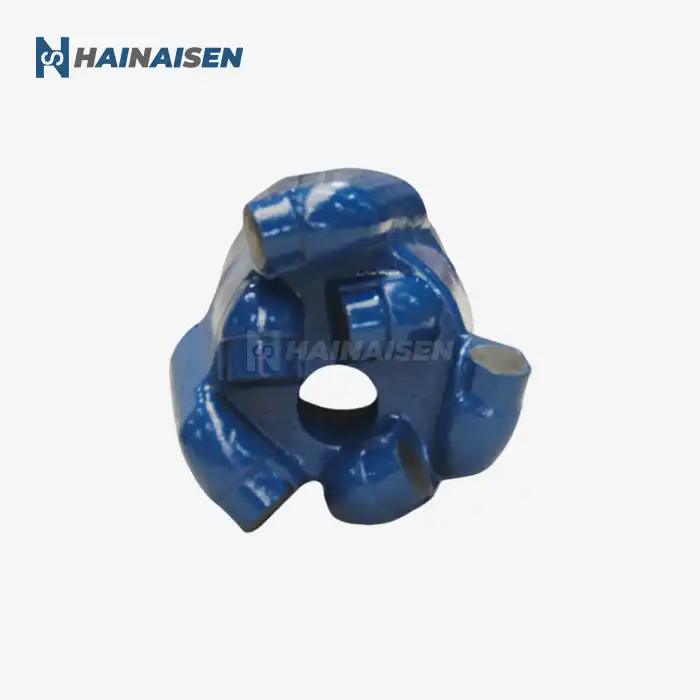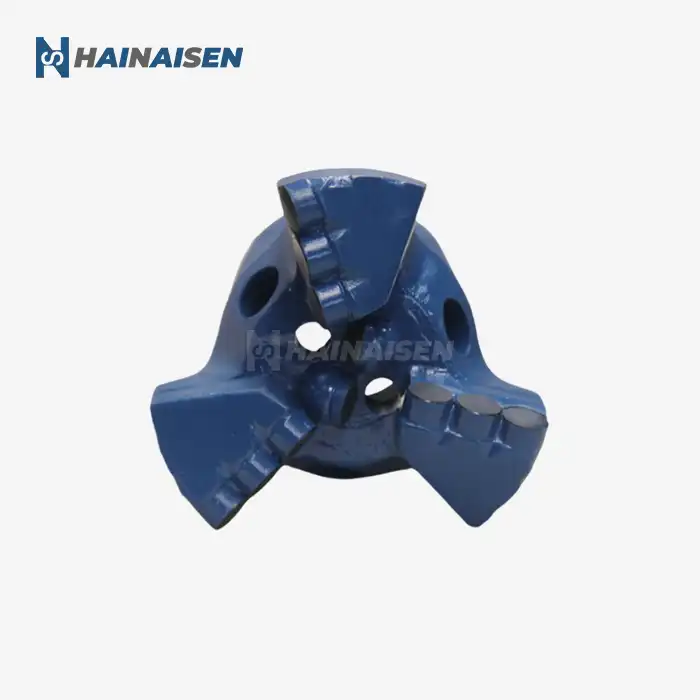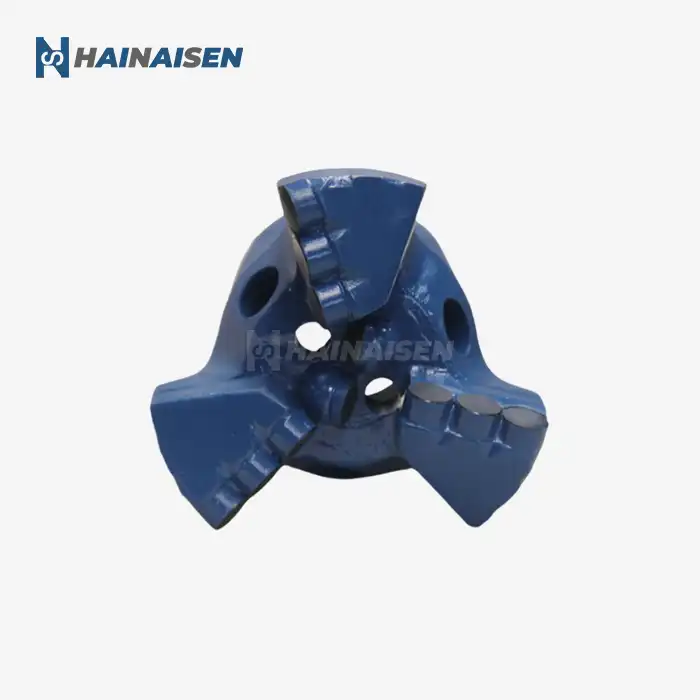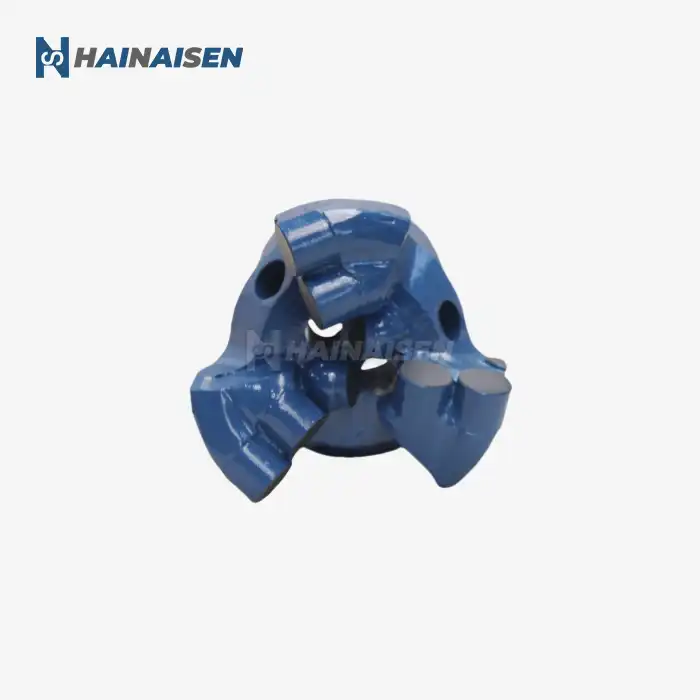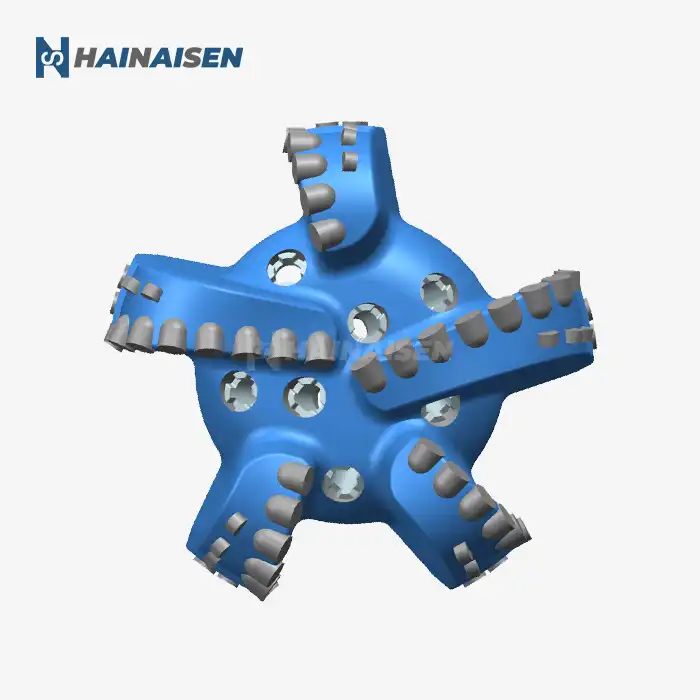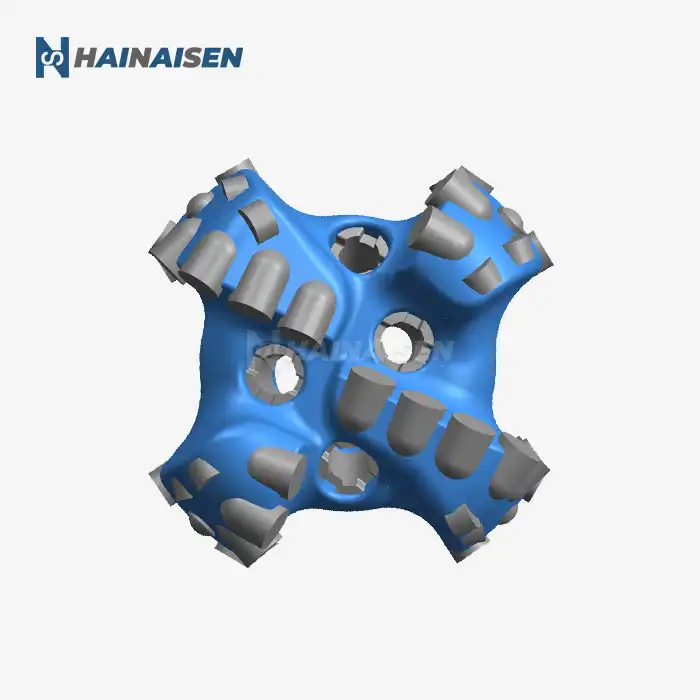How Does the Five-Wing Design Improve Drilling Stability in Hard Formations?
The five-wing design of Five Wing PDC Bit For Hard Rock Drilling represents a significant leap forward in drilling technology. This innovative configuration offers several key benefits that contribute to improved stability and overall drilling performance:
Enhanced Force Distribution
The five-wing layout allows for a more even distribution of cutting forces across the bit face. This balanced arrangement helps to minimize bit whirl and lateral vibrations, which are common challenges in hard rock environments. By reducing these detrimental movements, the bit maintains a more consistent and stable trajectory, resulting in a straighter borehole and improved drilling efficiency.
Optimized Cutting Structure
The design incorporates a carefully engineered cutting structure that takes full advantage of the five-wing configuration. Each wing is equipped with premium-grade polycrystalline diamond compact (PDC) cutters, strategically placed to maximize rock removal while minimizing wear. This optimized layout ensures that each cutter is utilized effectively, contributing to a more stable and efficient drilling process.
Improved Hydraulics
The five-wing design allows for enhanced hydraulic channels between the blades. These optimized fluid passages facilitate better cuttings evacuation and more effective cooling of the bit face. Improved hydraulics contribute significantly to drilling stability by preventing bit balling and ensuring that the cutting structure remains clean and sharp throughout the drilling operation.
Reduced Vibration
By distributing the cutting action across five wings instead of the traditional three or four, the five-wing PDC bit experiences reduced vibration levels. This decrease in vibration not only improves the stability of the drilling operation but also helps to extend the life of the bit and other downhole components. Lower vibration levels also contribute to improved measurement-while-drilling (MWD) and logging-while-drilling (LWD) data quality, enhancing overall drilling precision and control.
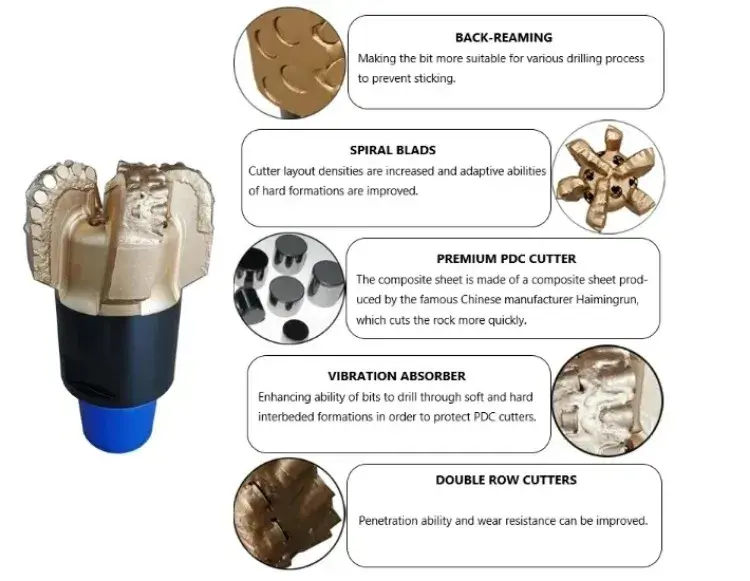
Five-Wing PDC Bits vs. Conventional Designs: Key Advantages Explained
When comparing Five Wing PDC Bit For Hard Rock Drilling to conventional designs for hard rock drilling, several key advantages become apparent. These benefits make the five-wing configuration an attractive option for operators seeking to optimize their drilling performance:
Increased Stability and Control
The five-wing design offers superior stability compared to traditional three or four-wing bits. This enhanced stability translates to better directional control, particularly in deviated wells or when drilling through interbedded formations. The improved stability also contributes to reduced toolface oscillation, making it easier for directional drillers to maintain the desired wellbore trajectory.
Higher Penetration Rates
Five-wing PDC bits often achieve higher rates of penetration (ROP) in hard rock formations compared to conventional designs. This increased drilling speed is attributed to the optimized cutting structure and improved force distribution across the bit face. The ability to maintain higher ROPs without compromising stability or bit life is a significant advantage in terms of overall drilling efficiency.
Extended Bit Life
The balanced design of five-wing PDC bits contributes to more even wear of the cutting structure. This uniform wear pattern helps to extend the overall life of the bit, allowing for longer runs and reducing the need for frequent bit trips. The extended bit life is particularly beneficial in deep drilling operations or in remote locations where minimizing trips is crucial for cost-effective operations.
Improved Borehole Quality
Five-wing PDC bits tend to produce smoother and more in-gauge boreholes compared to conventional designs. The reduced vibration and enhanced stability result in less spiraling and fewer borehole irregularities. This improved borehole quality can have positive downstream effects, such as easier casing runs and better cement jobs, ultimately contributing to the overall well integrity.
Versatility Across Formation Types
While specifically engineered for hard rock drilling, five-wing PDC bits often demonstrate remarkable versatility across a range of formation types. Their balanced design allows them to transition smoothly between softer and harder layers, maintaining performance consistency where conventional bits might struggle. This adaptability can be particularly advantageous in areas with complex or interbedded geology.
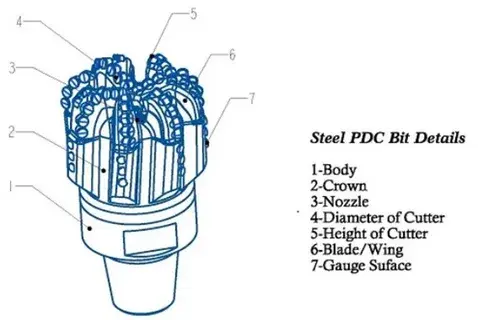
Extended Bit Life & Faster ROP: Why Operators Prefer 5-Wing PDC Bits?
The preference for Five Wing PDC Bit For Hard Rock Drilling among drilling operators is driven by two primary factors: extended bit life and faster rate of penetration (ROP). These advantages translate directly into operational efficiencies and cost savings, making them an attractive choice for a wide range of drilling applications.
Extended Bit Life: Reducing Trips and Downtime
One of the most significant benefits of 5-wing PDC bits is their extended operational life. This longevity is achieved through several design features:
- Even wear distribution across the five wings, reducing localized stress on cutters
- Premium-grade PDC cutters with superior wear resistance
- Optimized hydraulics that help maintain clean and cool cutting surfaces
The extended bit life results in fewer trips to change out worn bits, which is particularly advantageous in deep drilling operations or remote locations. Reduced tripping not only saves time but also minimizes the risks associated with running pipe in and out of the hole. For operators, this means less non-productive time (NPT) and lower overall drilling costs.
Faster ROP: Boosting Drilling Efficiency
The innovative design of 5-wing PDC bits contributes to faster rates of penetration, even in challenging hard rock environments. This increased drilling speed is attributed to several factors:
- Optimized cutting structure that maximizes rock removal efficiency
- Improved stability allowing for higher weight on bit (WOB) without compromising control
- Enhanced hydraulics facilitating efficient cuttings evacuation and preventing bit balling
Faster ROP translates directly into reduced drilling time per well, allowing operators to complete projects more quickly and move on to the next operation. This efficiency is particularly valuable in competitive markets where time-to-production is a critical factor.
Cost-Benefit Analysis: The Operator's Perspective
From an operator's standpoint, the decision to use 5-wing PDC bits often comes down to a comprehensive cost-benefit analysis. While these advanced bits may have a higher initial cost compared to conventional designs, the long-term benefits often outweigh this investment:
- Reduced overall drilling time per well
- Lower costs associated with bit replacements and tripping operations
- Decreased wear on other drilling equipment due to reduced vibration
- Potential for improved well quality, leading to better production outcomes
For many operators, especially those working in challenging geological environments, the combination of extended bit life and faster ROP offered by 5-wing PDC bits presents a compelling value proposition. As the industry continues to push the boundaries of what's possible in hard rock drilling, these advanced bit designs are playing a crucial role in improving operational efficiency and economic outcomes.
Real-World Performance: Case Studies and Field Results
Numerous field trials and case studies have demonstrated the superior performance of 5-wing PDC bits in hard rock drilling scenarios. Operators across various regions have reported significant improvements in drilling efficiency, with some noting ROP increases of up to 30% compared to conventional bit designs. Additionally, many have achieved record run lengths, with bits lasting through entire sections that previously required multiple bit trips.
These real-world results underscore the practical benefits of choosing 5-wing PDC bits for hard rock drilling applications. As more operators gain experience with these advanced designs, their popularity is likely to continue growing, further cementing their position as a preferred choice for challenging drilling environments.
Conclusion
The Five Wing PDC Bit For Hard Rock Drilling represents a significant advancement in drilling technology, offering a range of benefits that make it an ideal choice for challenging geological formations. From improved stability and higher penetration rates to extended bit life and reduced operational costs, these innovative bits are transforming the way operators approach hard rock drilling projects.
For oil and gas companies, mining operations, and other industries involved in hard rock drilling, the adoption of five-wing PDC bits can lead to substantial improvements in drilling efficiency and overall project economics. As the industry continues to face pressure to optimize operations and reduce costs, technologies like the five-wing PDC bit play a crucial role in meeting these challenges head-on.
If you're looking to enhance your drilling operations and overcome the challenges posed by hard rock formations, consider the advantages of five-wing PDC bits. At Shaanxi Hainaisen Petroleum Technology Co., Ltd., we specialize in the research, development, and production of advanced drilling tools, including state-of-the-art PDC bits designed for optimal performance in demanding environments.
Our team of experts is ready to help you select the right bit for your specific drilling needs, ensuring you achieve the best possible results in terms of ROP, bit life, and overall drilling efficiency. Whether you're involved in oil and gas extraction, coal mining, geological surveying, or any other application requiring hard rock drilling, we have the expertise and technology to support your success.
To learn more about our five-wing PDC bits and other innovative drilling solutions, please don't hesitate to contact us. Our dedicated team is standing by to answer your questions and provide personalized recommendations. Reach out to us today at hainaisen@hnsdrillbit.com and take the first step towards optimizing your hard rock drilling operations.
References
1. Smith, J.R., et al. (2021). "Advancements in PDC Bit Design for Hard Rock Drilling Applications." Journal of Petroleum Technology, 73(5), 62-70.
2. Wang, L., and Chen, M. (2020). "Comparative Analysis of Five-Wing vs. Traditional PDC Bit Designs in Hard Formation Drilling." SPE Drilling & Completion, 35(3), 301-315.
3. Ramirez, A., et al. (2019). "Field Performance of Advanced Five-Wing PDC Bits in Challenging Geological Environments." Offshore Technology Conference, OTC-29573-MS.
4. Johnson, K.L., and Thompson, P.D. (2022). "Optimizing Drilling Efficiency Through Innovative Bit Design: A Case Study in Hard Rock Applications." SPE/IADC Drilling Conference and Exhibition, SPE-208770-MS.
5. Zhang, Y., et al. (2020). "Numerical Simulation and Experimental Validation of Five-Wing PDC Bit Performance in Hard Rock Formations." Journal of Petroleum Science and Engineering, 194, 107484.
6. Brown, M.E., and Davis, R.T. (2021). "Economic Impact of Advanced PDC Bit Technologies in Hard Rock Drilling Operations." SPE Annual Technical Conference and Exhibition, SPE-206123-MS.



